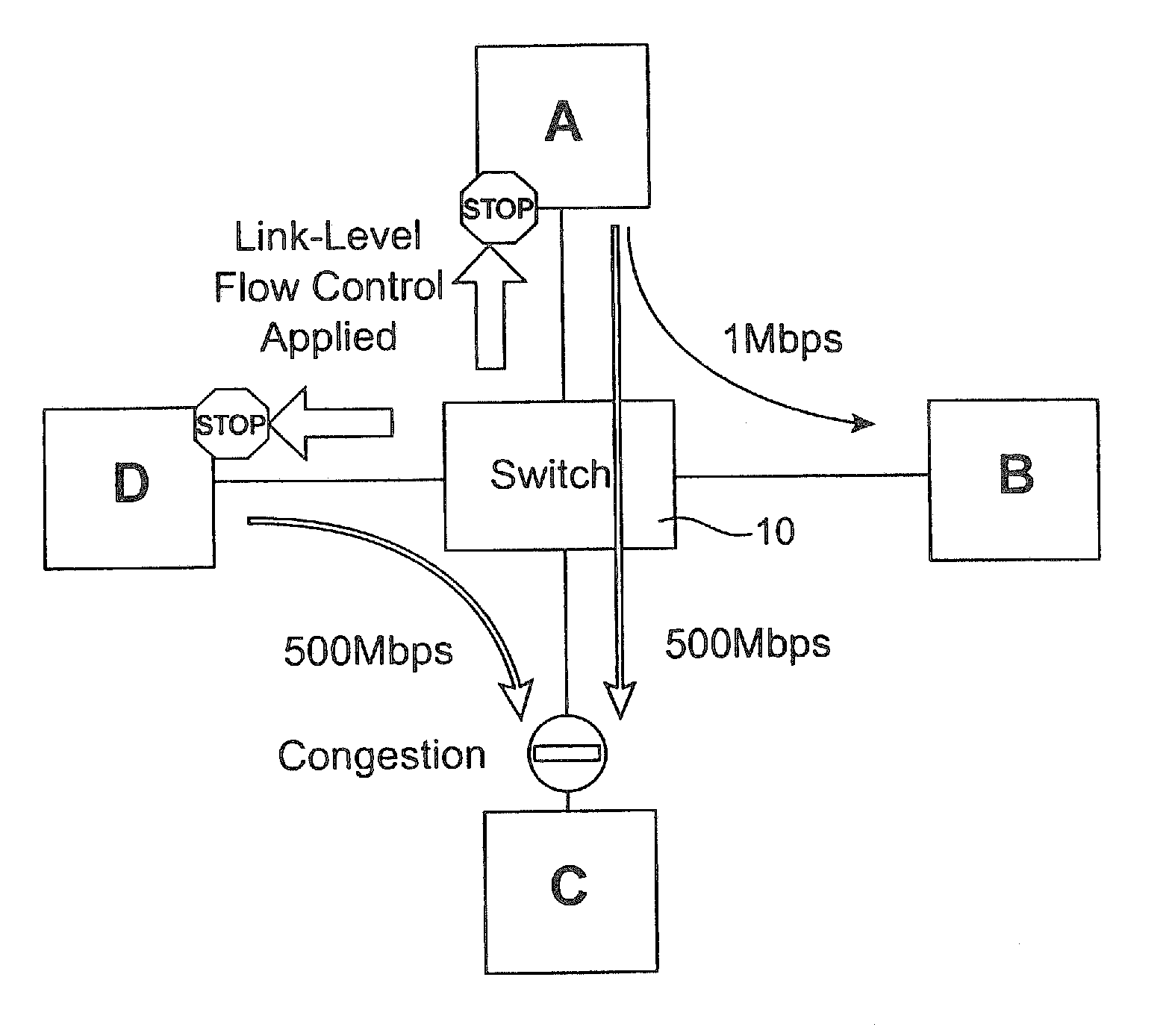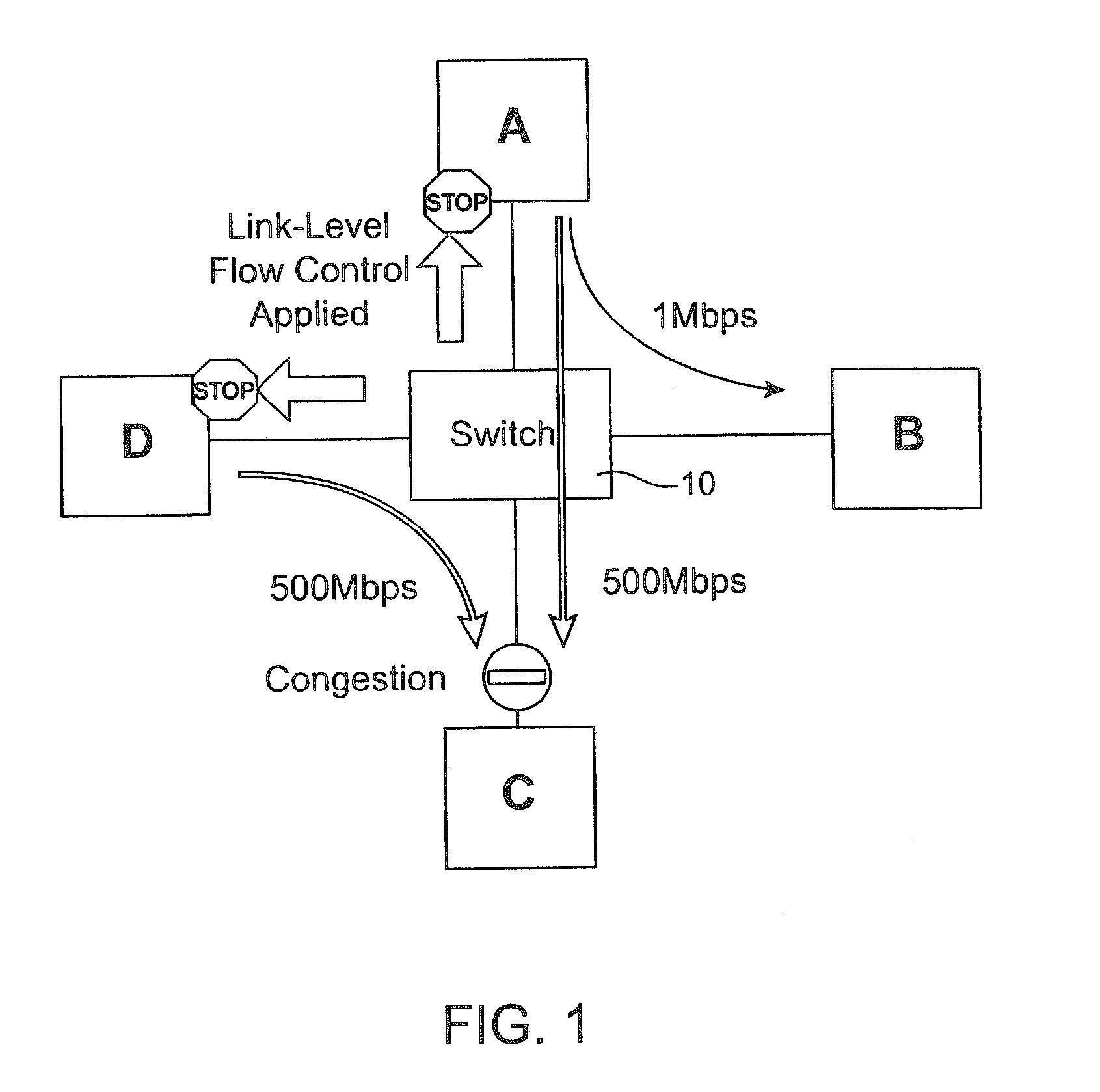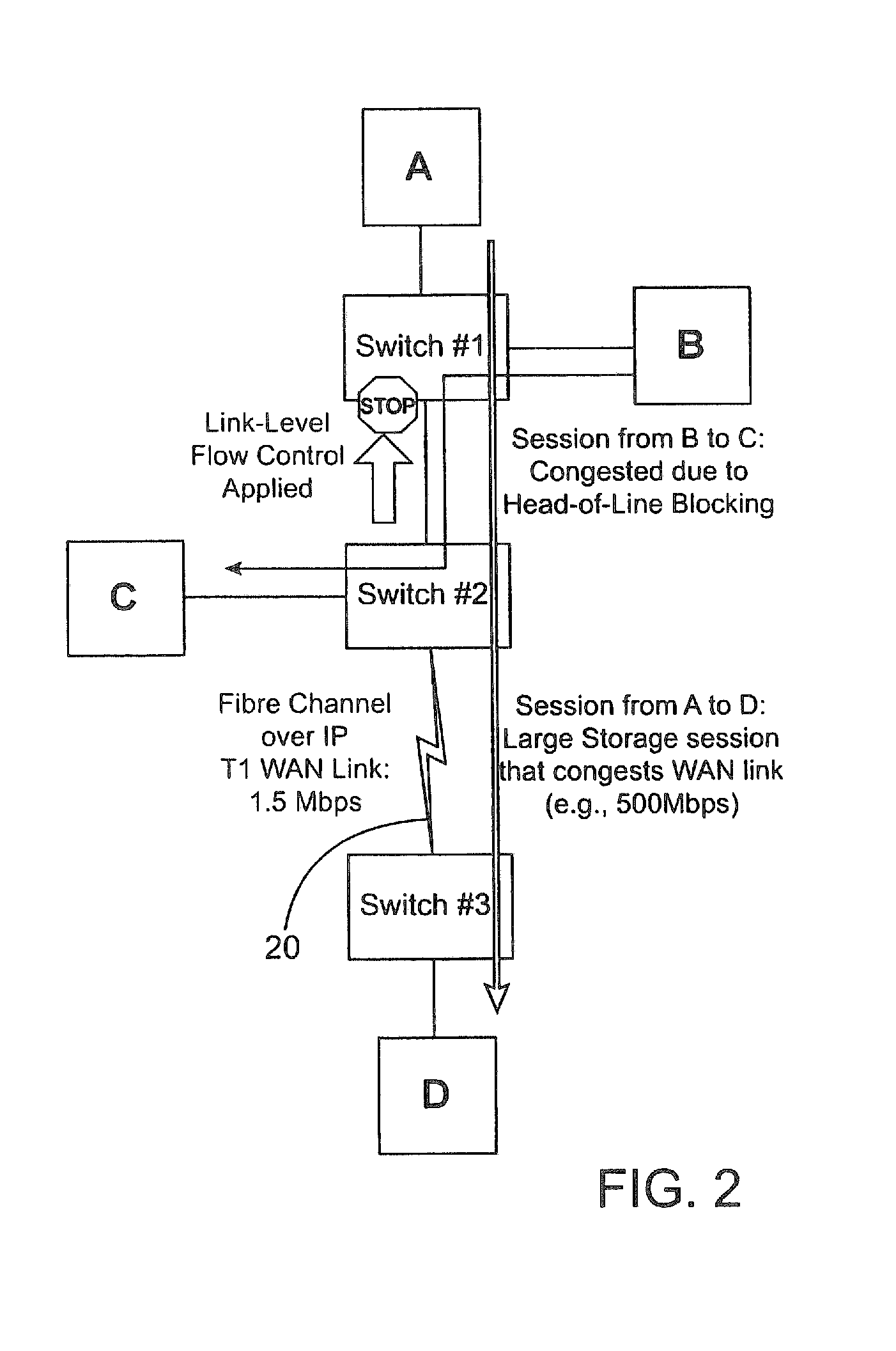Network congestion management systems and methods
a network congestion and management system technology, applied in the field of computer networks, can solve the problems of limited impact and consequences of congestion and head-of-line blocking, common congestion issues, and the potential to significantly scale the size of storage networks, so as to reduce network congestion, reduce network congestion, and reduce network disruption. the effect of disruption
- Summary
- Abstract
- Description
- Claims
- Application Information
AI Technical Summary
Benefits of technology
Problems solved by technology
Method used
Image
Examples
Embodiment Construction
[0045]A network device, such as a switch device or other device, is configured with a congestion management module (“Congestion Manager”) according to one embodiment of the present invention. The Congestion Manager, in certain aspects, is configured to monitor traffic sessions flowing through the device and to implement resource management algorithms responsive to detected traffic. In certain aspects, the Congestion Manager monitors each SCSI task and implements an intelligent algorithm to ensure an optimal dynamic allocation of finite buffer resources to each task. For example, to overcome head-of-line blocking issues resulting from slower-speed links, such as low speed WAN links or TCP / IP based links, SCSI-level end-to-end flow control congestion management is provided by a Congestion Manager in a switch device to advantageously prevent head-of-line blocking in each local SAN fabric. Such flow control mechanisms manage buffer and system level resources on a per-task basis. Switche...
PUM
 Login to View More
Login to View More Abstract
Description
Claims
Application Information
 Login to View More
Login to View More - R&D
- Intellectual Property
- Life Sciences
- Materials
- Tech Scout
- Unparalleled Data Quality
- Higher Quality Content
- 60% Fewer Hallucinations
Browse by: Latest US Patents, China's latest patents, Technical Efficacy Thesaurus, Application Domain, Technology Topic, Popular Technical Reports.
© 2025 PatSnap. All rights reserved.Legal|Privacy policy|Modern Slavery Act Transparency Statement|Sitemap|About US| Contact US: help@patsnap.com



